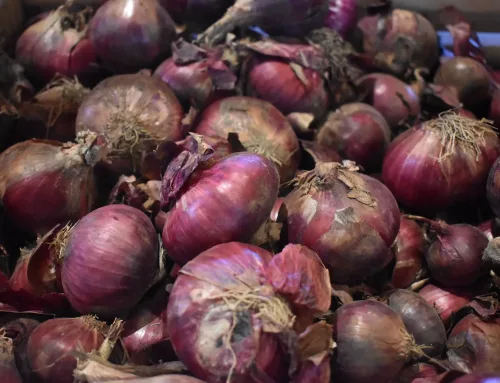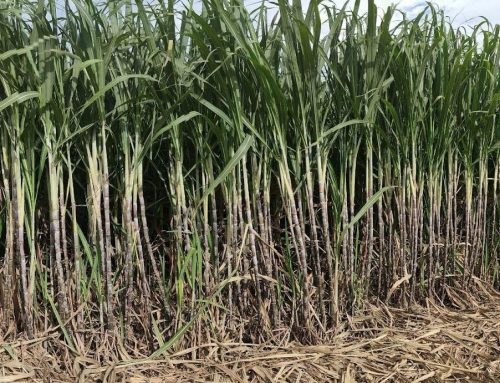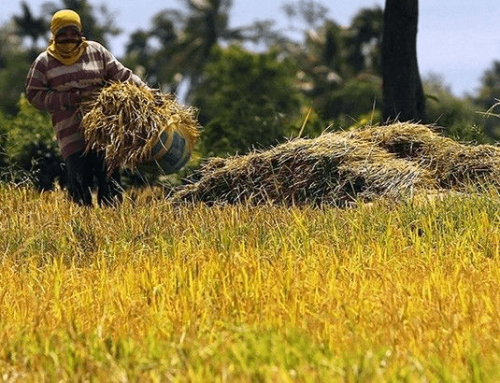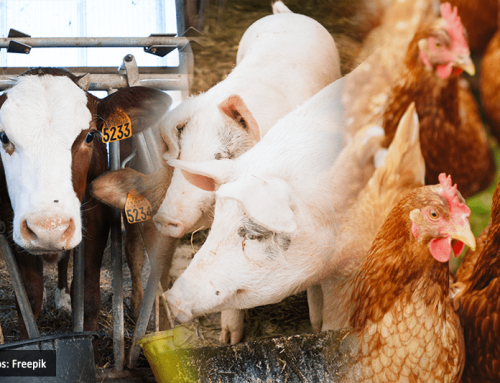In this Article
Discover the reason for the sudden surge in tomato prices, analyzing supply dynamics, stability strategies, and Philippine agricultural efforts toward international expansion.
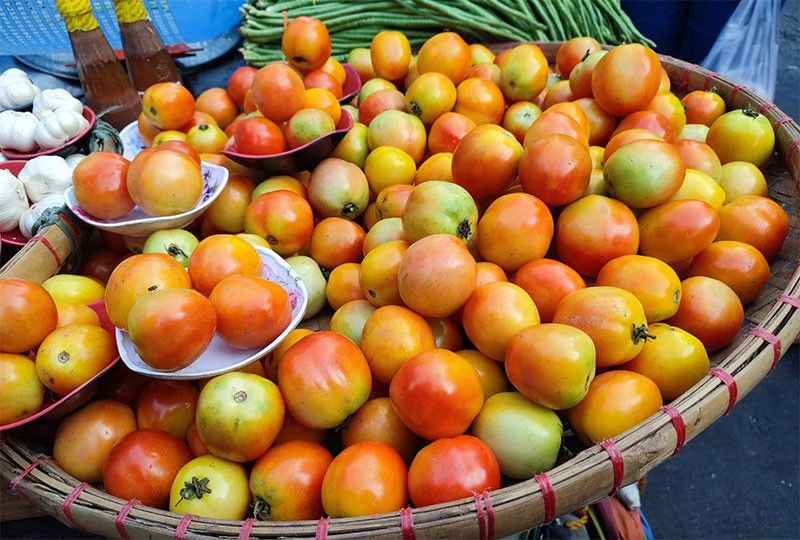
Latest Trends in Supply and Prices of Tomato in Q1 2024
On June 31, 2024, the Philippine Statistics Authority (PSA) released its latest data on the volume of tomatoes produced in the country, which slightly increased from 92,707.89 metric tons (MT) during the first quarter (Q1) of 2023 to 93,131.76 MT in the same period of 2024. The slight increase revealed that tomato supply for Q1 of 2024 is stable, which is crucial for meeting the market demand for tomatoes and stabilizing its market price. However, data for the second quarter (Q2) of 2024 is yet to be released by PSA, in which production level is expected to shift significantly due to the effects of Typhoon Aghon on agricultural farms from May 24, 2024 to May 28, 2024.
According to PSA, the stability in the supply of tomatoes during Q1 and the increase in demand provided benefits to the farmers due to higher farmgate prices, which increased by 38.44% from Php 28.42 per kilogram (kg) in Q1 of 2023 to Php 39.34 per kg in the same period of 2024. Meanwhile, retail prices slightly increased by 18.44% from Php 71.74 per kg in Q1 2023 to Php 84.97 per kg in 2024.
Sudden Price Surge in July
On July 4, 2024, the Department of Agriculture (DA) reported a sudden increase in the retail prices of tomatoes sold in Metro Manila. Prices soared from a range of Php 70 to Php 140 per kilogram (kg) in the last week of June to a range of Php 110 to Php 180 per kg during the first week of July. On July 5, 2024, DA spokesman Arnel de Mesa acknowledged the influence of Typhoon Aghon, which adversely affected tomato crops in Southern Tagalog, contributing to the price increase.
Mr. Danilo Fausto of the Philippine Chamber of Agriculture and Food Inc. (PCAFI) highlighted the need for improved post-harvest facilities to mitigate such fluctuations. He suggested processing tomatoes into value-added products like paste or sauce to manage oversupply during peak harvest seasons. On July 9, 2024, DA’s price monitoring body recorded the highest retail price range of tomatoes sold in Metro Manila, between Php 140 and Php 220 per kg. Navigating tomato price fluctuations will require farmers to engage in strategic planning, consider crop diversification, and potentially invest in post-harvest facilities to manage seasonal variations effectively.
On July 12, 2024, the Department of Agriculture (DA) reported that they anticipate a decline in retail prices of tomatoes in the following weeks as harvests from Southern Tagalog provinces near Metro Manila begin to arrive. The agency also cited increasing fuel prices as another factor contributing to the sudden price increase of tomatoes, as it affected the transportation costs of tomato traders, aside from El Niño. To lessen the impact of the fuel price surge on farmers, the DA approved the disbursement of Php 510.447 million in fuel subsidies for approximately 160,000 farmers. Each registered farmer owning or renting agricultural machinery will receive Php 3,000 before the month ends.
Greater Market Access
On July 5, 2024, the DA reported that it is taking significant steps to expand the export market for high-value crops, including tomatoes, with Php 10 billion in funding allocated for next year. DA Undersecretary Cheryl Natividad-Caballero highlighted the importance of maximizing existing trade agreements with countries such as Vietnam, South Korea, Australia, Japan, China, and New Zealand. By optimizing these agreements, DA aims to meet and supply the growing international demand for tomatoes and other high-value crops. To further improve the export readiness of high-value crops, DA requested the government to increase funding for the High-Value Crops Development Program (HVCDP) to around Php 16 billion in 2025.
The requested increase in funding will help address the requirements for high-quality production of high-value crops like tomatoes, ensuring these crops meet international standards. Filipino tomato farmers will gain access to a broader and more lucrative global market, which may drive higher demand and better crop prices, increasing farm profitability. This initiative will help position high-value crop farmers competitively in the global market, fostering a sustainable and profitable future for the agricultural sector.
PCAARRD’s Initiatives for Tomato
SPRINT-HORT Program
The recent price surge and supply dynamics in the tomato market emphasized the importance of initiatives that aim to stabilize and enhance the industry. The “Strategic Postharvest Research for Innovative and Novel Technologies for Horticulture Industry Development” (SPRINT-HORT) program funded by the Department of Science and Technology Philippine Council for Agriculture, Aquatic, and Natural Resources Research and Development (DOST-PCAARRD) and implemented by the Postharvest Training and Research Center (PHTRC) and the Institute of Crop Science (ICrops) in the University of the Philippines Los Baños (UPLB), aims to reduce postharvest losses and improve the overall efficiency of the horticulture industry.
Under this program, the team of Engr. Ryan Anthony Lualhati of the PHTRC is developing low-cost cooling and storage systems, including cold room technology and an evaporative humidifier, which are crucial for preserving the quality and extending the shelf life of tomatoes.
These advancements, coupled with the natural preservation techniques spearheaded by Ms. Wella A. Morales of ICrops, such as the use of chitosan and virgin coconut oil, are essential for mitigating the impact of supply fluctuations and seasonal variations. By reducing postharvest losses and improving storage capabilities, the SPRINT-HORT program’s initiatives directly address the challenges faced during events like Typhoon Aghon and the subsequent price hikes of tomatoes reported in July 2024. This connection between innovative research and practical applications ensures that Filipino tomato farmers can better manage supply, stabilize prices, and enhance their market competitiveness.
Virus Detection Kit for Tomato Yellow Leaf Curl
In a project review organized by DOST-PCAARRD, new developments were reported on the detection kit for tomato yellow leaf curl virus (TYLCV). This virus is a major issue for tomato farmers across the Philippines, causing marginal curling and yellowing of leaves. DOST-PCAARRD funded the project titled, “Development of LAMP-based detection kit for Tomato Yellow Leaf Curl Virus (TYLCV) – Philippine Strains,” led by Dr. Elizabeth Panerio of the Industrial Technology Development Institute (DOST-ITDI), which aimed to create a faster diagnostic tool using Loop-mediated Isothermal Amplification (LAMP) technology.
This kit will aid in quarantine regulations and border surveillance of TYLCV, identifying strains and their occurrences in 15 tomato-producing provinces. Field sampling was conducted in major provinces like Nueva Ecija, Tarlac, Laguna, and Batangas, and two primers for TYLCV and Tomato Leaf Curl Virus (ToLCV) have been synthesized. During the review, which was held via videoconferencing, Dr. Panerio highlighted the progress in field sampling and primer synthesis. Dr. Mark Balendres of IPB suggested incorporating integrated pest management (IPM) to enhance the project’s biosecurity plan.
Disease-Resistant Tomato and Pepper
Another project funded by DOST-PCAARRD in collaboration with the Manila Economic and Cultural Office – Taipei Economic Cultural Office (MECO-TECO) S&T Cooperation Program that is implemented by the Institute of Plant Breeding (IPB) in UPLB titled, “Disease Resistant Tomato and Pepper for Chinese Taipei and the Philippines,” which aims to enhance tomato and pepper crops’ resistance to bacterial wilt and anthracnose. Led by Dr. Mark Angelo Balendres of IPB, the project identified 21 tomato and 51 pepper lines resistant to bacterial wilt, along with 11 pepper lines resistant to anthracnose, all of which will be registered with the Germplasm and Technology Registration Release Office (GTRRO) of IPB.
The project also validated 15 molecular markers associated with tomato bacterial wilt resistance and seven markers linked to anthracnose resistance in peppers. These markers hold substantial potential for accelerating the development of new disease-resistant cultivars, promising enhanced crop protection strategies for farmers. Under the guidance of Dr. Tonette Laude, field trials across key agricultural regions will evaluate these top-performing lines in real-world conditions. This collaborative effort aims to equip Filipino farmers with enhanced and disease-resistant varieties.
Through the aforementioned initiatives, DOST-PCAARRD aims to significantly improve the productivity, resilience, and sustainability of the country’s tomato industry, ensuring a stable and competitive agricultural sector.
References: Arcalas, J.E. (2024, June 26). Meat imports to further rise this year. The Philippine Star. Retrieved June 26, 2024 from https://www.philstar.com/business/2024/06/17/2363329/meat-imports-further-rise-year
Cariaso, B. (2024, July 4). DA: Tomato prices up P180 per kilo. The Philippine Star. Retrieved July 5, 2024 from https://www.philstar.com/nation/2024/07/04/2367583/da-tomato-prices-p180-kilo
Cariaso, B. (2024, July 5). Tomato retail price expected to go down soon – DA. The Philippine Star. Retrieved July 5, 2024 from https://www.philstar.com/nation/2024/07/05/2367872/tomato-retail-price-expected-go-down-soon-da
Cariaso, B. (2024, July 8). ‘High tomato price to stay amid rainy season’. The Philippine Star. Retrieved July 8, 2024 from https://www.philstar.com/nation/2024/07/08/2368524/high-tomato-price-stay-amid-rainy-season
Miguel, J.A. (2024, July 5). DA wants greater market access for high-value crops. The Manila Times. Retrieved July 5, 2024 from https://www.manilatimes.net/2024/07/05/news/national/da-wants-greater-market-access-for-high-value-crops/1955220
PSA. (2024, July 5). Other Crops: Volume of Production, by Region, by Quarter and Semester, 2010-2024. OpenSTAT. Retrieved July 5, 2024 from https://openstat.psa.gov.ph/PXWeb/pxweb/en/DB/DB__2E__CS/0132E4EVCP1.px/?rxid=bdf9d8da-96f1-4100-ae09-18cb3eaeb313
PSA. (2024, July 5). Fruit Vegetables: Farmgate Prices by Geolocation, Commodity, Year and Period. OpenSTAT. Retrieved July 5, 2024 from https://openstat.psa.gov.ph/PXWeb/pxweb/en/DB/DB__2M__NFG/0032M4AFN05.px/?rxid=a981c6a2-9398-4b52-bcb8-66268e903b22
PSA. (2024, July 5). Fruit Vegetables: Retail Prices by Geolocation, Commodity, Year and Period. OpenSTAT. Retrieved July 5, 2024 from https://openstat.psa.gov.ph/PXWeb/pxweb/en/DB/DB__2M__NFG/0032M4AFN05.px/?rxid=a981c6a2-9398-4b52-bcb8-66268e903b22
Sembrano, D.L.C. (2022, August 4). Potential Lines of Disease-Resistant Tomato and Pepper, Identified through the MECO-TECO S&T Cooperation Program. DOST-PCAARRD QID Articles. Retrieved July 15, 2024 from https://pcaarrd.dost.gov.ph/index.php/quick-information-dispatch-qid-articles/potential-lines-of-disease-resistant-tomato-and-pepper-identified-through-the-meco-teco-s-t-cooperation-program
Sembrano, D.L.C. (2022, September 13). Development of Tomato Yellow Leaf Curl Virus Detection Kit, Advances. DOST-PCAARRD QID Articles. Retrieved July 15, 2024 from https://www.pcaarrd.dost.gov.ph/index.php/quick-information-dispatch-qid-articles/development-of-tomato-yellow-leaf-curl-virus-detection-kit-advances
Valdeavilla, T.M. (2024, April 17). DOST-PCAARRD-UPLB’s SPRINT-HORT Program to Decelerate Postharvest Losses Across 9 Provinces. DOST-PCAARRD News. Retrieved July 12, 2024 from https://www.pcaarrd.dost.gov.ph/index.php/quick-information-dispatch-qid-articles/dost-pcaarrd-uplbs-sprint-hort-program-to-decelerate-postharvest-losses-across-9-provinces?highlight=WyJ0b21hdG8iXQ==

